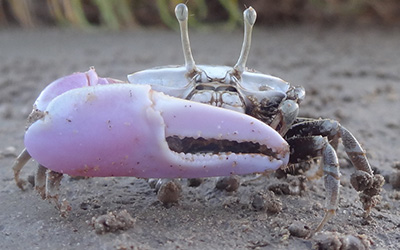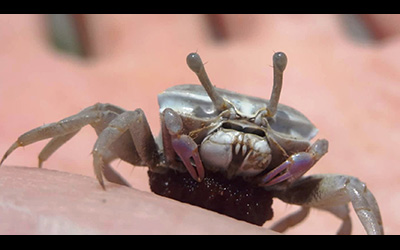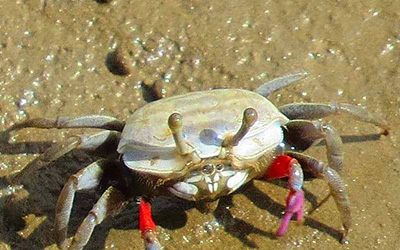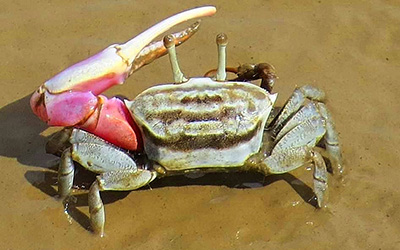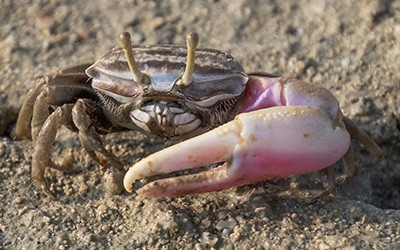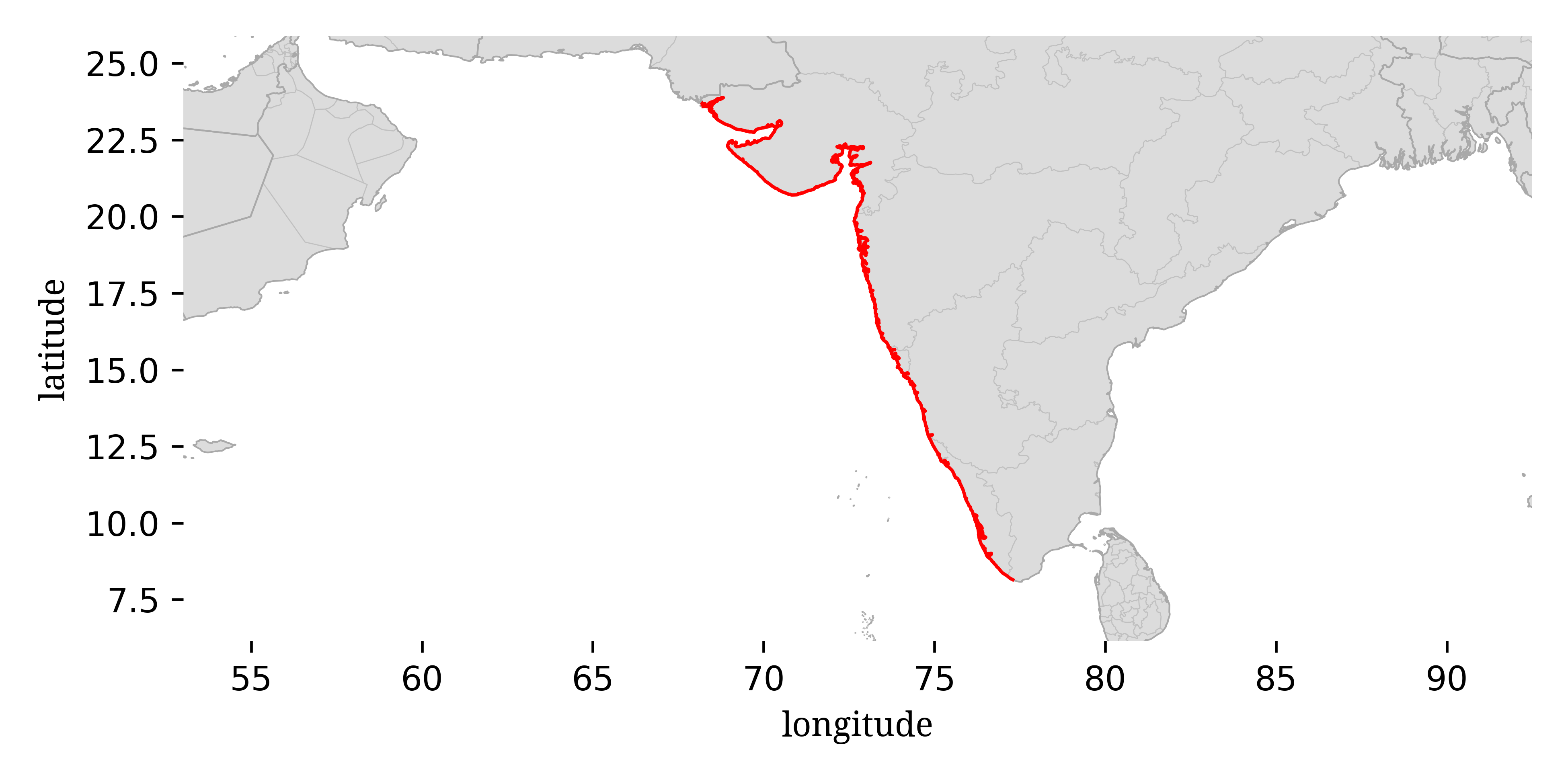
This guide is designed for identification “in the field” where you might be looking at live crabs by eye or through binoculars or from photographs. I will generally try to avoid characters that will require you to physically catch the crab, although I may mention a few for secondary verification. It does not include the more strict taxonomist-style characters that may only be visible under a microscope or via dissection. It is also assumed that the individuals are living, as death (and even capture) can cause dramatic color change.

This is a guide to the fiddler crabs of the west coast of continental India, from the state of Gujarat to Kerala, including six species:
Although six species are included, over most of this coastline there are only three: Austruca annulipes, Gelasimus hesperiae, and Tubuca alcocki. Gelasimus tetragonon is a rarer species, although relatively easy to identify. Austruca iranica and Austruca sindensis are only found in the northwestern state of Gujarat.
A number of features can be used to distinguish among these species, but a good place to start is to look at the distance between the base of the eyestalks. Fiddler crabs tend to split into two groups, those with the eyestalks very close together (“narrow front”) and those with the eyestalks separated a bit more (“broad front”). Three of these species (Austruca annulipes, Austruca iranica, and Austruca sindensis) are broad front species, while the other three, (Gelasimus hesperiae, Gelasimus tetragonon, and Tubuca alcocki) are narrow front species.
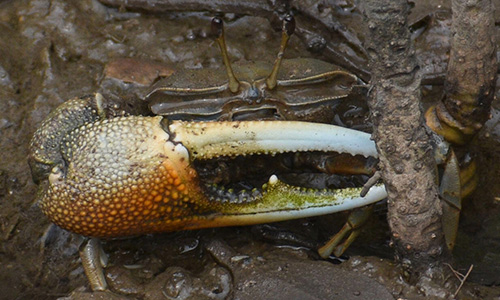
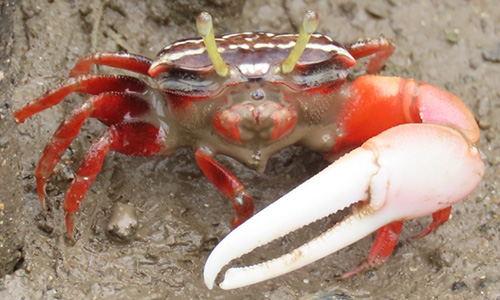
Tubuca alcocki is one of the two common narrow front species on the west coast of India, but should be easy to identify as it is distinct in both color and form. Adult Tubuca alcocki tend to have solid colored, dull, dark blue or brown carapaces, with a large claw with pale, off-white fingers, and a darker hand in dull brown or orange.
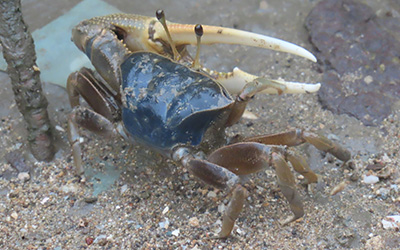
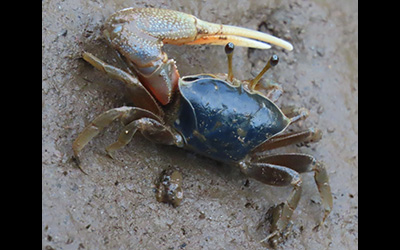
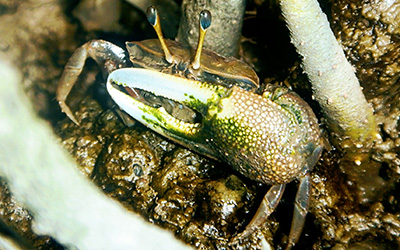

Younger and smaller Tubuca alcocki tend to be much more brightly colored. Their carapace may be more molted, rather than a single solid color, with bright blues, blacks, and some white mixed together. The colors on the large claw are also frequently brighter in color than those on the largest adults.
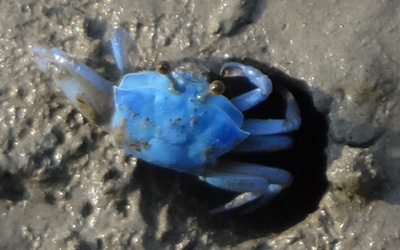

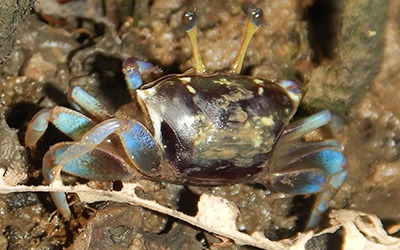
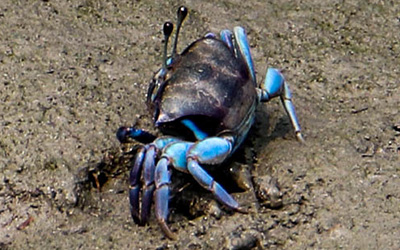
The fingers of the large claw tend to be much straighter and less curved than in the other species, frequently with noticable grooves along them. In the largest individuals, the fingers may be extremely long relative to the size of the hand.
Gelasimus hesperiae is a narrow front species with a white or pale greenish-brown carapace and a distinctively shaped large claw. It never has any blue and should be readily distinguishable from all of the other species. The dactyl on the large claw is usually white or pink, while the rest of the claw usually ranges from orange to pale yellow. The dactyl is relatively thick and straight for about half its length before clearly curving to a thick point. The pollex will frequently have two very clear large teeth, one about midway along the length and one near the tip, although one or both can be absent. Like Tubuca alcocki, it has large bumps (tubercles) on the hand of the claw and will often have a noticeable groove along the base of the pollex.
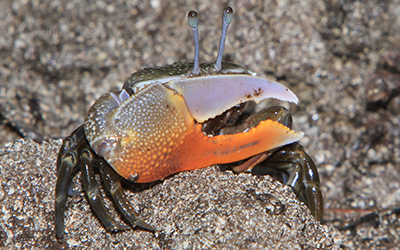
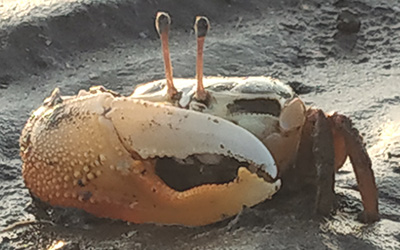
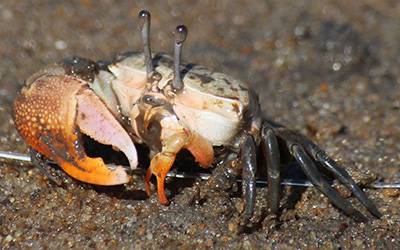
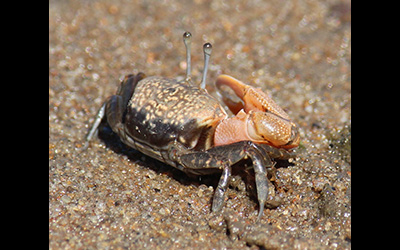
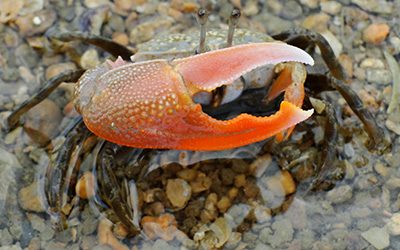
Gelasimus tetragonon is a species widely spread among oceanic islands that occasionally is found on continental shorelines, including the central part of the western India. A narrow front species, it should be easily distinguishable from the other two narrow front species by color. Gelasimus tetragonon tends to have a predominantly blue and black carapace, frequently speckled, and bright red legs (which occasionally may be darker). The large claw is generally orange, with a noticeably darker red spot near the base of the pollex. The dactyl (upper finger) is usually mostly white. Gelasimus tetragonon frequently has brown spots on the top part of the hand of the claw.
Gelasimus tetragonon has a lot of variability that can overlap with the other local species. In some cases, its carapace can lighten so that there is almost no blue, just a cream or pale orange with black markings. The pattern of the colors on the carapace can vary from stripes or blotches to tiny spots.
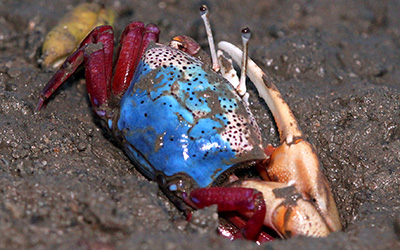
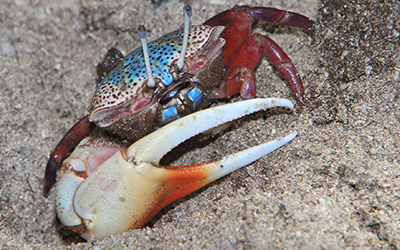
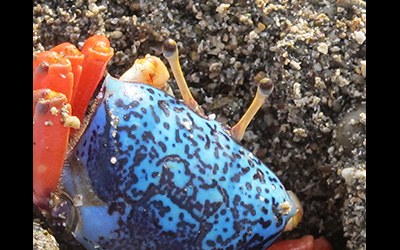
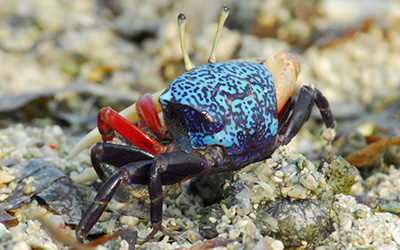
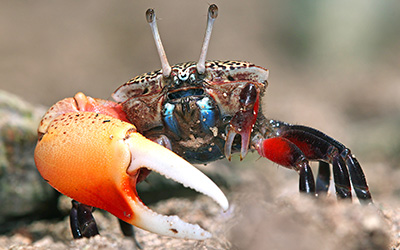
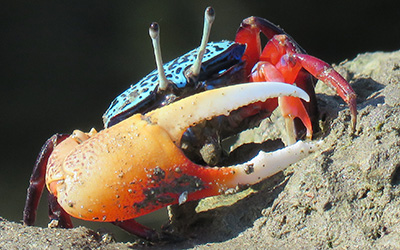
Although both Gelasimus tetragonon and Tubuca alcocki are predominantly blue, Gelasimus tetragonon tends to have bright colors while Tubuca alcocki tends to have duller shades (juveniles not withstanding); the shape, structure, and color of the large claw is also very different between the two species.
Austruca annulipes is likely the most common fiddler crab in India and over most of the western coastline (excluding only the state of Gujarat), the only broad front species present. Generally, the carapace of Austruca annulipes tends to be a mix of black and white. The large arm of Austruca annulipes is generally orange or red, with some of the color frequently found on the hand of the claw as well.
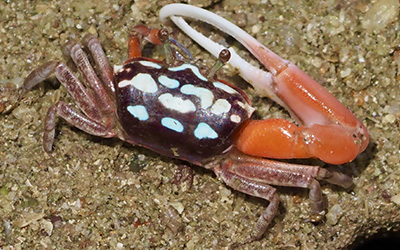
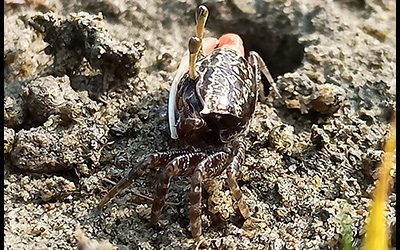
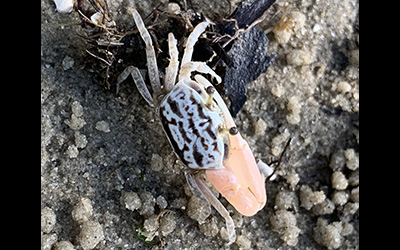
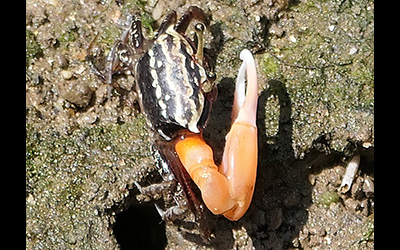
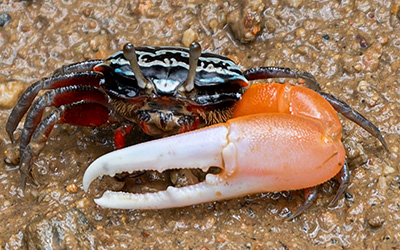
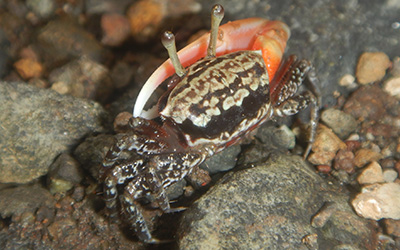
Austruca iranica is similar to Austruca annulipes. It has a carapace that is usually solid white (occasionally with a mix of white and gray/black), its limbs range from dark red to white, and the large arm and claw are usually white (sometimes with a bit of subtle pale color). Within India it is only found in the state of Gujarat.

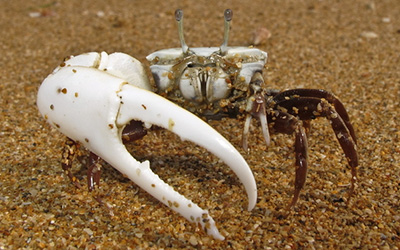
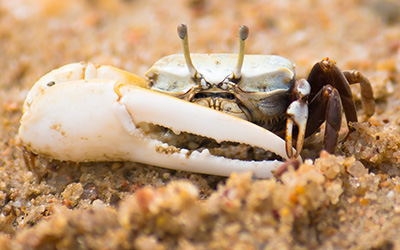
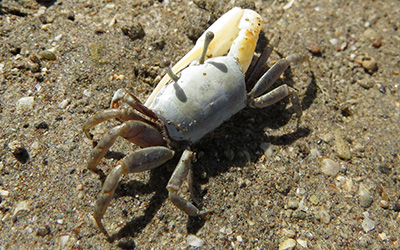
Within Gujarat it is possible to confuse Austruca annulipes and Austruca iranica, although generally one would expect Austruca iranica to have a lot more white (particularly on the carapace and large claw) and a lot less red and black than tends to be found on Austruca annulipes.
Austruca sindensis is easy to identify by color. Its carapace is generally pale gray, with darker stripes, and its large claw is predominantly lilac. Within India, it is only found in the state of Gujarat.
